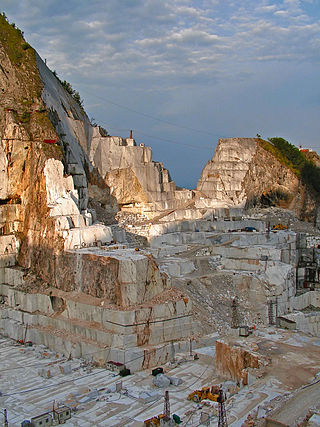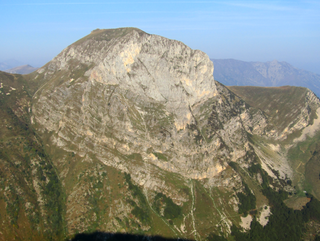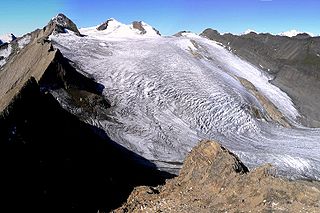
I Borghi più belli d'Italia is a non-profit private association of small Italian towns of strong historical and artistic interest, that was founded in March 2001 on the initiative of the Tourism Council of the National Association of Italian Municipalities, with the aim of preserving and maintaining villages of quality heritage. Its motto is Il fascino dell'Italia nascosta.

Punta Tre Vescovi is a peak in the Biellese Prealps, in northern Italy. On its top, three valleys meet: Lys Valley, Valsesia, and Cervo Valley.

Pizzo Diei is a mountain of the Lepontine Alps in Piedmont, northern Italy. It is located in the Alpe Veglia Nature Park in the commune of Varzo, and has a slightly lower sister peak, the pyramidal shaped Monte Cistella. The mountain is a popular ski mountaineering peak and its summit offers fine views of the Monte Rosa Massif.

The Monte Capio is a mountain in the Pennine Alps of north-western Italy; with an elevation of 2,172 m (7,126 ft) is one of the highest peaks of the Alpi Cusiane.

The Monte I Gemelli is an Alpine mountain located between Aosta Valley and Piedmont.

The Punta Cornour is a 2,868 metres high mountain on the Italian side of the Cottian Alps.

The Punta Lunella is a mountain of the Graian Alps, with an elevation of 2,772 m.

The Monte Zeda is a mountain in the Lepontine Alps belonging to the Province of Verbano-Cusio-Ossola (Italy).

The Monte Massone, at an elevation of 2,161 m (7,090 ft), is a mountain of the Pennine Alps in North-western Italy.

Monte Cianea is a 1,226-metre (4,022 ft) mountain of the Ligurian Prealps, in Italy.

No Cav is an Italian protest movement that arose in the early 21st century, criticising the Carrara marble and carbonate quarries in the Apuan Alps.

The Cima Cars is a mountain of the Ligurian Alps located in Piedmont.

The Monte Fantino is a mountain of the Ligurian Alps located in the Piedmont region of northwestern Italy.
The Ligurian Prealps are a mountain range in northwestern Italy. They belong to the Ligurian Alps and are located between the regions of Piemonte and Liguria. Their highest summit is the monte Armetta, at an elevation of 1,739 metres (5,705 ft).

Monte Pietraborga is a mountain in the Cottian Alps, Metropolitan City of Turin in Piedmont, north-western Italy. It is located between the comuni of Trana and Sangano.

Corno di Ban is a mountain of Piedmont, Italy, with an elevation of 3,028 metres (9,934 ft). It is located in the Lepontine Alps, in the Province of Verbano-Cusio-Ossola, a few kilometers from the border with Switzerland.

The Punta dei Camosci, or Bättelmatthorn, is a mountain of the Lepontine Alps, with an elevation of 3,046 metres (9,993 ft). It is located on the Italy–Switzerland border, between the Piedmontese Province of Verbano-Cusio-Ossola in Italy and Canton Valais in Switzerland.

The Siedel Rothorn, also known as Rothorn or Corno Rosso, is a mountain of the Lepontine Alps, with an elevation of 3,289 metres (10,791 ft).

The Ossola Republic was a partisan republic that was established in northern Italy on September 10, 1944 and recaptured by the fascists on October 23, 1944. Unlike other partisan republics, the Ossola Republic was able, in little more than a month of existence, to cope not only with the contingencies imposed by the state of war, but also to give itself an articulate organization, with the establishment of the Provisional Government Council of Domodossola and the liberated zone (G.P.G.). During the albeit brief Forty Days of Freedom, illustrious figures such as Umberto Terracini, Piero Malvestiti and Gianfranco Contini collaborated on the drafting of democratically oriented reforms, which would later inspire the drafting of the Italian Constitution.



















